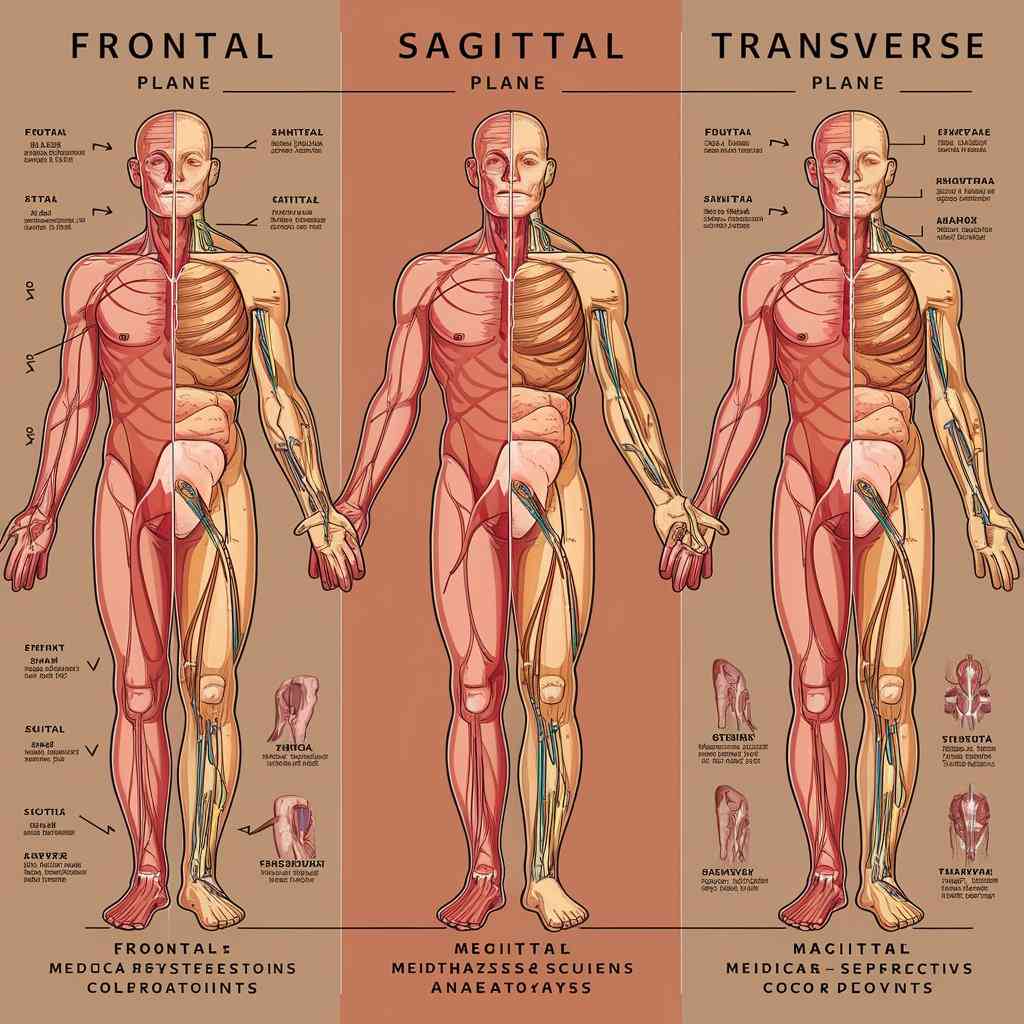The anatomical position is the primary reference point in the discipline of anatomy, ensuring consistency and clarity in the description and study of the human body’s components and functions. This standardized stance, which consists of an upright posture, a forward-facing orientation, arms at the sides with palms forward, and feet together or slightly apart, enables healthcare professionals, educators, and researchers to effectively communicate about the location and relationships of body parts. This standard, which uses distinct anatomical planes (sagittal, frontal, and transverse), allows for exact diagnosis, correct documentation, and advanced study, establishing the foundation of anatomical science and its applications.
Table of Contents
What is Anatomical Position?
The anatomical position is a defined stance used in anatomy to provide uniformity and clarity when discussing the positions and relationships of bodily parts.
In the anatomical position, the body is:
- Standing upright
- Facing forward
- Arms at the sides
- Palms facing forward
- Feet together or slightly apart
Anatomical Planes
Three main anatomical planes can be used to segment the body:
Sagittal Plane
- Splits the body into the left and right halves.
- The body is divided into equal right and left halves by the midsagittal plane, also known as the middle plane.
- The body is divided into unequal halves on the right and left by the parasagittal plane.
Coronal or frontal plane
Separates the front (anteromedial) and rear (posterior) portions of the body.
Horizontal (transverse) plane
Separates the superior (upper) and inferior (lower) portions of the body.

Variations
Although the conventional anatomical posture offers a starting point, deviations may be necessary based on particular medical or anatomical contexts:
Supine Position: Face up while lying on the back.
Prone Position: Lying face down on the stomach.
Lateral (Side-lying) Position: Lying on either the left or right side.
Trendelenburg Position: Lying on the back with the body tilted so the head is lower than the feet.
Fowler’s Position: An inclined sitting position with different degrees of support (often utilized in medical contexts).
Applications
Understanding the anatomical position and planes is critical in several fields:
Medical and healthcare professions
Diagnostics: Accurately defining the location of injuries, infections, or surgical sites.
Radiology: The uniform interpretation of imaging examinations such as X-rays, CT scans, and MRIs.
Surgery: Specifying surgical procedures and techniques.
Education and Communications
Teaching: Assisting students and professionals in understanding and communicating anatomical structures and relationships.
Documentation: Maintaining accurate and consistent medical records.
Research
Anatomical Studies: Comparing anatomical structures from different populations and species.
Biomechanics: Studies movement and posture in relation to body planes.
Physical Therapy and Rehabilitation
Accurate assessment and documentation: Enables precise assessment and documenting of postural and movement abnormalities.
Guiding Effective Treatment Plans: Helps arrange targeted therapy to restore function and alignment.
Sports Science
Analysis of athletic performance: The anatomical position is used to examine athletes’ motions, revealing inefficiencies and potential performance enhancements.
Development of Training Programs: Customized exercises and routines are designed to correct imbalances and strengthen susceptible regions, lowering the likelihood of injury.
Forensic Science
Body Position Documentation: The anatomical position is a standardized reference for precisely recording the position of bodies at crime scenes.
Evidence documenting: Using the anatomical position allows precise and consistent documenting of evidence, which is required for forensic investigation.
To summarize, the anatomical position is a key concept in anatomy, offering a consistent and clear framework for explaining the human body’s features and relationships. By standardizing the body’s stance and employing certain anatomical planes, this reference system improves communication, accuracy, and precision in medical practice, teaching, and research. Understanding and utilizing the anatomical position is vital for accurate diagnostics, surgical operations, and anatomical investigations, emphasizing its importance in developing healthcare and scientific knowledge.
Frequently Asked Questions (FAQ)
What is the anatomical position?
The anatomical position is a standardized stance that serves as a reference point in anatomy. It entails standing straight, facing ahead, arms at your sides, palms facing front, and feet together or slightly apart.
What are the basic anatomical planes?
The basic anatomical planes are the sagittal plane, which divides the body into right and left parts; the frontal (or coronal) plane, which divides the body into anterior and posterior parts; and the transverse (or horizontal) plane, which divides the body into superior and inferior portions.
How does anatomical position help in forensic investigations?
In forensic science, the anatomical position serves as a consistent reference for documenting body positions and injuries at crime scenes. It ensures accurate documentation of evidence, which is essential for forensic analysis and courtroom testimony.
Related Articles

